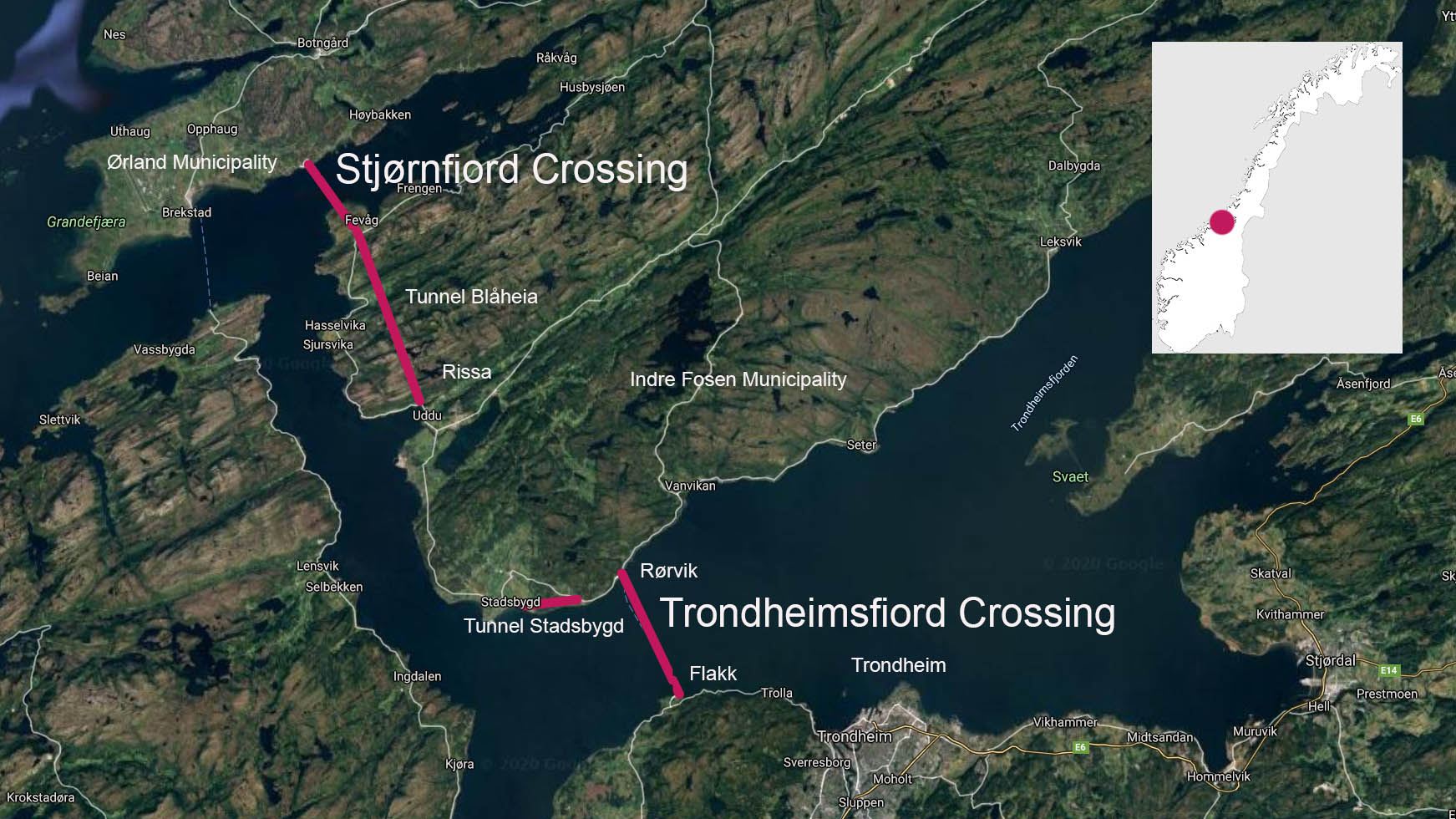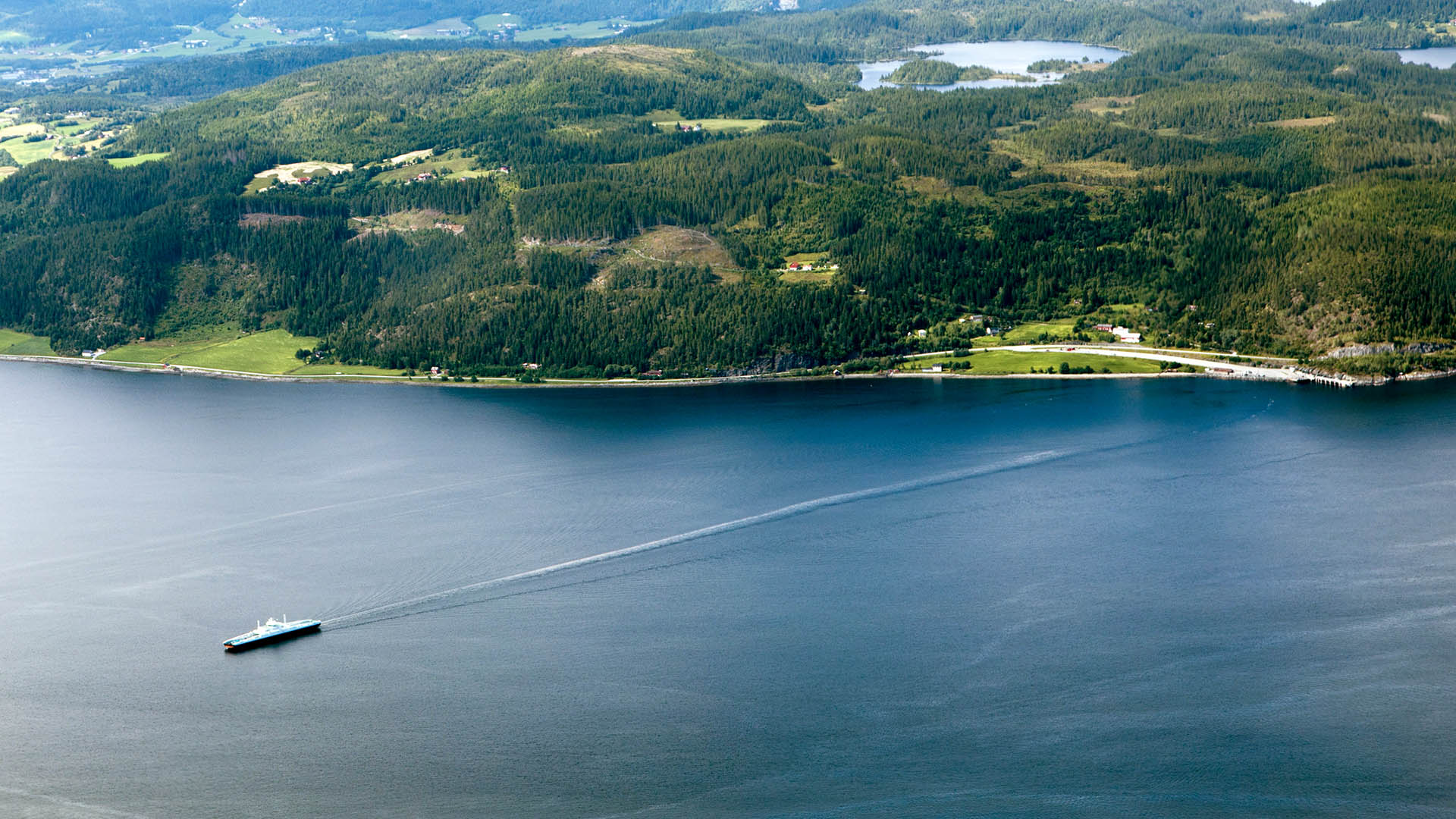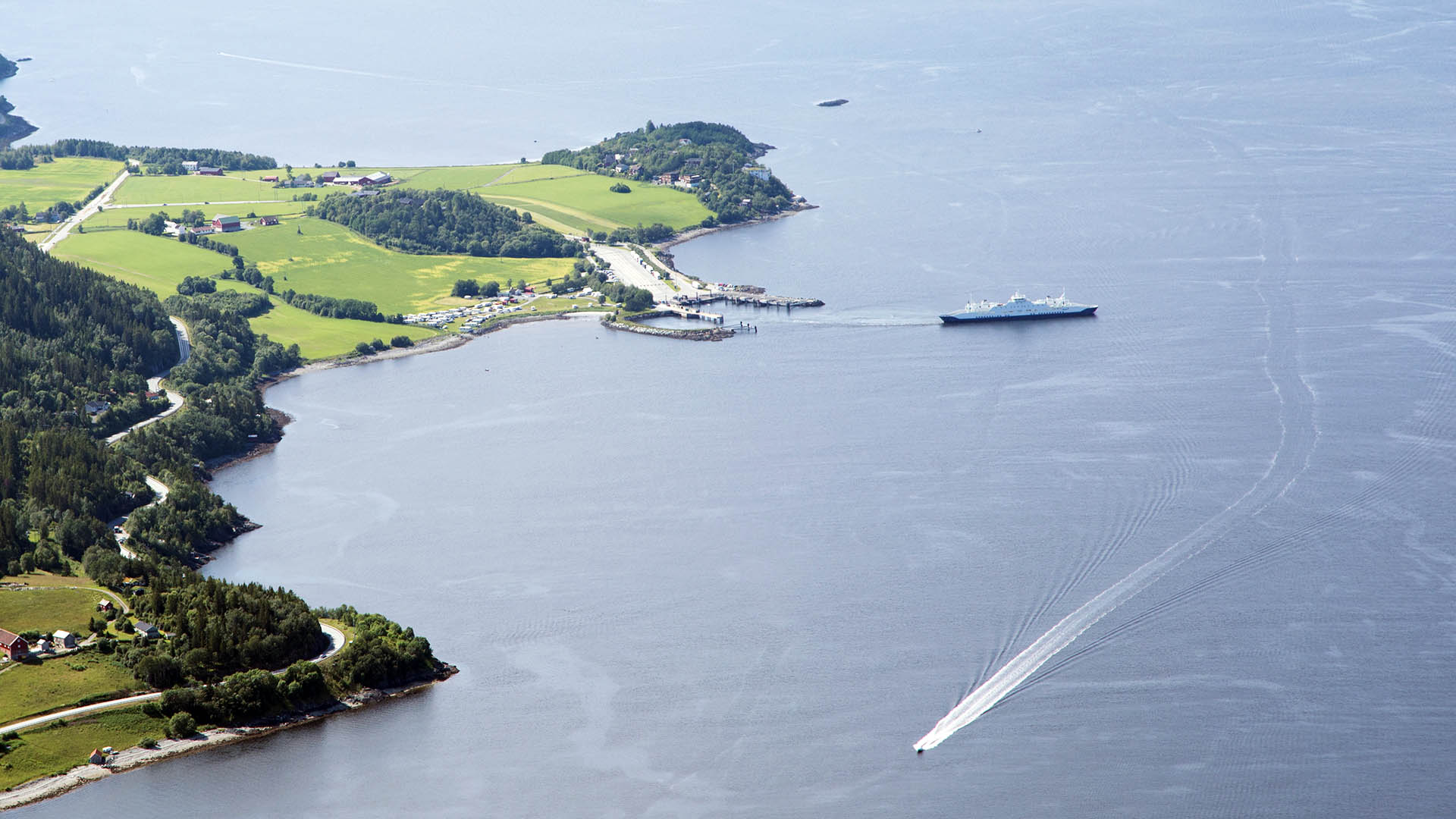
Working towards a fixed connection between the Fosen Peninsula and Trondheim
The company Fosenbrua AS is looking at the possibility of financing a fixed connection between Fosen and Trondheim. A project package of around NOK 12 billion consists of a large bridge crossing the fiord, and some tunnel and road measures.
Parts of the project are located on county road 715 in Trøndelag, which connects the Fosen Peninsula with Trondheim, while measures are also included on some other county roads. It is planned that the projects in their entirety will be financed by the traffic itself, but in order to keep the toll rates down, it is assumed that the loans are repaid over a longer period of time than usual in Norway otherwise.
Fosen / The Fosen Penunsula
The Fosen Peninsula has approx. 25,000 inhabitants in four municipalities. There are road connections in the north via Osen, Malm, and Inderøya, while in the south there are two ferry connections across the Trondheim Fiord: Ferry Flakk-Rørvik and Ferry Brekstad-Valset. Municipalities at Fosen: Ørland, Indre Fosen, Osen and Åfjord.
Preparation
There has been work going on for a connection across the Trondheim fiord between the Fosen Peninsula and Trondheim for several years. A company has been established to work for the realization of the plans – Fosenbrua AS. The selected crossing area is between Flakk and Rørvik, where the largest ferry connection is today.
Travel times
The toll project “Fosenpakken” has significantly reduced the time distances at Fosen. The company Fosenbrua AS has formulated a toll package, which together with the bridge over the Trondheim Fiord also includes a bridge over the Stjørnfiord as well as road measures of significance for the travel time over new mainland connections. In total, this means that most of Fosen’s around 25,000 inhabitants will be able to reach Trondheim in less than an hour.
Growing population in the Trondheim region
The population in Trondheim is growing rapidly, and is approaching 190,000 inhabitants. Greater Trondheim, consisting of the nearest neighboring municipalities, as well as Orkland and Stjørdal, currently has a population of around 260,000 inhabitants.
Low traffic growth at ferry connection Flakk-Rørvik
Today’s traffic at the Ferry connection Flakk-Rørvik is less than 2000 kjt ÅDT, and has shown very low traffic growth in recent years.
Communication framework and traffic
In recent times, ferry prices and tolls may have affected the growth in Fosen traffic somewhat, but development over time indicates more fundamental challenges. The two ferry connections that serve Fosen today, Fv 715 Flakk-Rørvik and Fv 710 Brekstad-Valset, clearly represent a communication framework for the population, business and leisure that is so inhibiting that development takes place elsewhere. Today there is great pressure along the Orkanger-Trondheim-Stjørdal axis.
Traffic analyzes
A large traffic analysis carried out by Norconsult shows heavily suppressed traffic. According to the analysis, the bridge over the Trondheimfiord will have a traffic of 5-6000 kjt. ÅDT (average daily traffic over the year in number of vehicles) if it is carried out alone on the current road network.
With all projects completed, the traffic, according to the analysis, will be 6-7000 kjt. ÅDT. The bridge over the Stjørnfiord will have 2600 kjt. ÅDT, and 3200 kjt. ÅDT if a new road is built between Fevåg and Rissa at the same time. The traffic on the bridge over the Trondheimsfiord is almost unaffected by the bridge over the Stjørnfiord.
Norconsult AS established a traffic analysis model for the work which is based on the Norwegian Public Roads Administration’s regional transport model (RTM) and sub model E39 (DOM E39). This is the professional model tool for testing the effect of changes in the road network, and sensitivity to various conditions such as traffic growth, interest rates, etc.
Repayment periods
The traditional repayment periods for toll loans of 15-20 years are very challenging for large infrastructure projects outside the larger cities. Ferry replacements for replaced ferry connections now assume that annual grants can be included in the financing over a period of up to 45 years.
Furthermore, it can be argued that financing of such strategic and expensive infrastructure should be considered as investments that can be depreciated and financed in line with other investments. For example are loans for municipal facilities and schools currently repaid over 30 or 40 years. In the preparatory work for this project, it is assumed that there is an opportunity to collect tolls over 40 years.
From tunnel to floating construction
While crossing by means of underwater tunnel previously has been discussed further north in the Trondheim Fiord, the latest work has been based on a floating construction across the fjord in the area of the current ferry connection Flakk-Rørvik. Until 2013, the work mainly has been carried out by the consulting firm Rambøll AS, and has to a considerable extent been based on knowledge from the work with Ferry-free E39.
Strait Crossings
The results of the work were presented at the international conference Strait Crossings 2013 in Bergen 16-19. June 2013. Posts and presentations are available in Proceedings from the conference, published under the Norwegian Public Roads Administration’s reports, report no. 231 at www.vegvesen.no.
Technically possible and economically feasible
The conclusions after Ramboll’s work were clear. Both that it is technically possible and that it can be financially feasible if a toll period is extended beyond the 20 years that are typical of ferry replacement projects today. It was further pointed out that the financing ability of the project would be strongly affected by increased settlement at Fosen.
Since the previous work, a lot has happened around fjord crossings. This applies first and foremost to technical solutions and effects on society.


